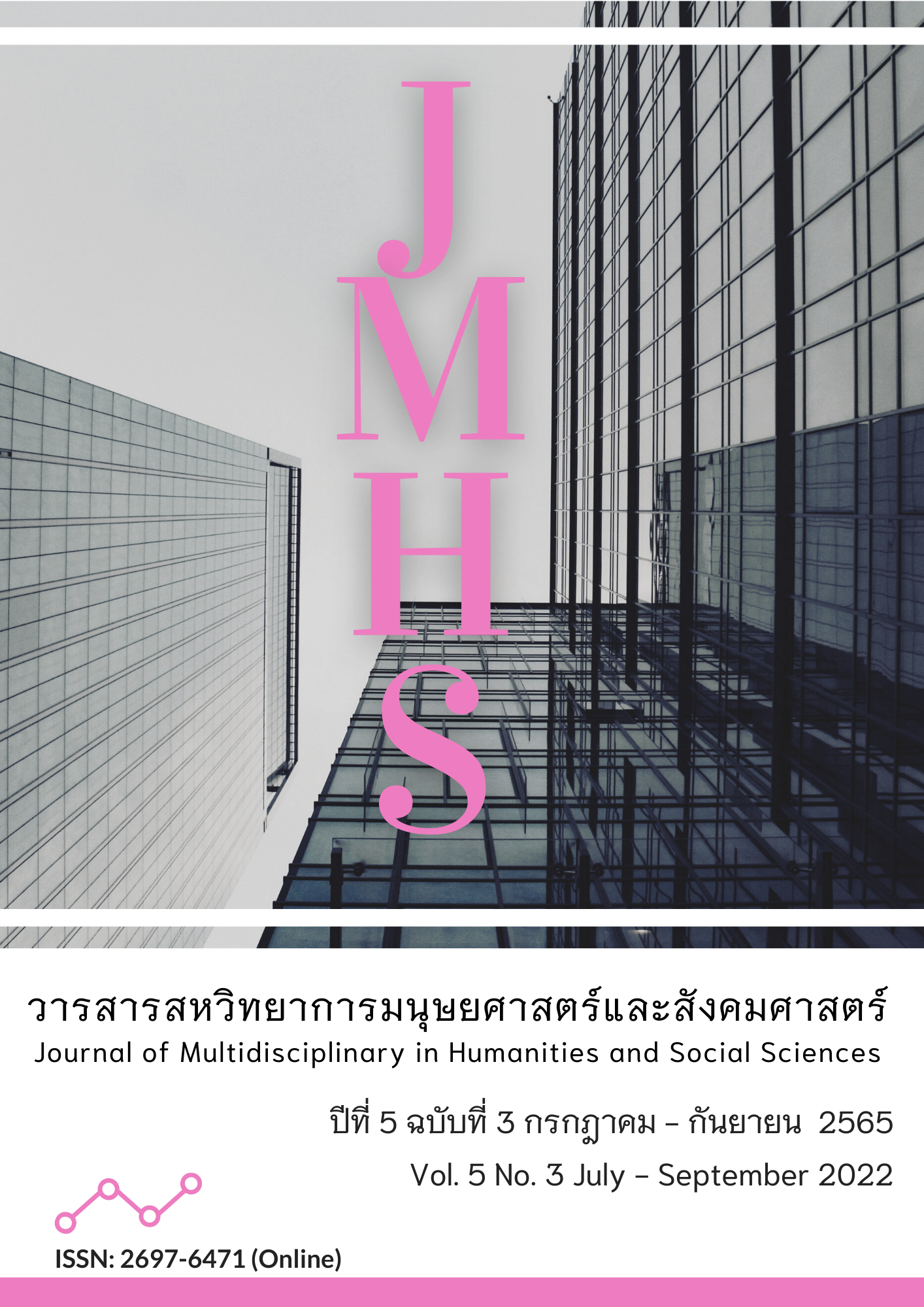The Development of Simulation Training System for Microsoft Office Program for Undergraduate Students
Main Article Content
Abstract
This research is aimed at Microsoft Office-usage simulation development for bachelor's degree students in a private university and to study the satisfaction results of system development. and to study the satisfaction results of system development. The result of the system's assessment acquired from three system experts and a group of 50 first-year university students under the business administration faculty of a private university in the academic year of 2564 shows that the overall system evaluation average from the experts was 4.36, at the highest level, and the standard deviation was 0.70. In addition, the result evaluated by the students, in terms of system-usage satisfaction was 4.36, a high satisfaction level, and the web-system layout and appearance were appraised at 3.92, a medium satisfactory level. In addition, the satisfaction rate of web-system usage was 4.14, the highest one. The system experience assessment is rated at 4.36, indicating high-level satisfaction.
Article Details

This work is licensed under a Creative Commons Attribution-NonCommercial-NoDerivatives 4.0 International License.
Views and opinions appearing in the Journal it is the responsibility of the author of the article, and does not constitute the view and responsibility of the editorial team.
References
ฉวีวรรณ กีรติกร. (2538). การพัฒนาทักษะการคิดคำนวณของนักเรียนระดับประถมศึกษา. กรุงเทพฯ: จุฬาลงกรณ์มหาวิทยาลัย.
ชุติธารรัฐ อุตมะสิรเสนี. (2562). การพัฒนาแอปพลิเคชันออนไลน์สำหรับจัดเก็บข้อมูลทักษะความสามารถของนักศึกษาระดับปริญญาตรี. วารสารสมาคมอุดมศึกษาเอกชนแห่งประเทศไทย, 8(2), 75-89.
ถวัลย์ มาศจรัส. (2548 ). คู่มือความคิดสร้างสรรค์ในการจัดทำนวัตกรรมการศึกษา. กรุงเทพฯ: ธารอักษร.
พนภาค ผิวเกลี้ยง และ มาเรียม นิลพันธุ์. (2557). การพัฒนาชุดทักษะการเขียนโปรแกรมสำหรับนักเรียนชั้นมัธยมศึกษาปีที่ 5. วารสารศิลปกรศึกษาศาสตร์วิจัย, 6(1), 80-90.
สำนักงาน ก.พ. (2565). Digital literacy Project. สืบค้นเมื่อ 10 มีนาคม 2565, จาก https://www.ocsc.go.th/DLProject/mean-dlp.
ภาณุวัฒน์ วรพิทย์, เบญจา จำรัส กลิ่นหนู และ ณรงค์ศักดิ์ ศรีสม. (2558). การพัฒาระบบแอปพลิเคชันการจัดการเรียนการสอนในห้องเรียนเสมือนจริงบนอุปกรณ์เคลื่อนที่. วารสารวิชาการคณะเทคโนโลยีอุตสาหกรรม มหาวิทยาลัยราชภัฏลำปาง, 8(2), 58-67.
ธิดารัตน์ กุลณัฐรวงศ และ เกียรติศักดิ์ พันธ์ลำเจียก. (2561). การพัฒนาระบบการสอนอัจฉริยะบนเว็บตามความแตกต่างระหว่างบุคคลด้านแบบการเรียนเพื่อเสริมสร้างผลสัมฤทธิ์ทางการเรียนของนักศึกษาระดับปริญญาตรี. Veridian E-Journal, Silpakorn University, 11(1), 1691-1706.
บุญชม ศรีสะอาด. (2545). การวิจัยเบื้องตน. (พิมพครั้งที่ 7). กรุงเทพฯ: สุวีริยาสาส์น.
สำนักงานสถิติแห่งชาติ. (2562). การสำรวจการมีการใช้เทคโนโลยีสารสนเทศและการสื่อสารในครัวเรือน. สืบค้นเมื่อ 11 เมษายน 2565, จาก http://www.nso.go.th/sites/2014/Pages/News/2562/N12-11-62.aspx.
เพลินพิศ ศิริสมบูรณ์. (2559). คุณลักษณะบัณฑิตตามกรอบมาตรฐานคุณวุฒิระดับอุดมศึกษาแห่งชาติของวิทยาลัยเซาธ์อีสท์บางกอก ประจำปีการศึกษา 2556-2557 (รุ่นที่ 15). วารสารวิชาการเซาธ์อีสท์บางกอก, 2(2), 55-67.
ศิริพล แสนบุญส่ง. (2561). การพัฒนาสื่อมัลติมีเดียเพื่อการเรียนรู้ เรื่อง โปรแกรมค้นหาสำหรับนักเรียนระดับชั้นมัธยมศึกษาปีที่ 1 โรงเรียนวัดพระขาว (ประชานุเคราะห์) จังหวัดพระนครศรีอยุธยา. วารสารนวัตกรรมการเรียนรู้, 4(2), 1-15.
ARIT. (2021). 7 ทักษะจำเป็นของการเป็นพลเมืองดิจิทัล. สืบค้นเมื่อ 14 เมษายน 2565, จาก https://www.arit.co.th/topic/19/.
Jobthai. (2020). 10 คุณสมบัติในการทำงานที่นายจ้างทุกคนต้องการจากผู้สมัคร. สืบค้นเมื่อ 30 มีนาคม 2562, จาก https://www.jobthaicom/REACH/ career-tips.html.
Jobthaiweb. (2020). ทักษะที่สำคัญของคนทำงานรุ่นใหม่. สืบค้นเมื่อ 10 เมษายน 2565, จาก https://www.jobthaiweb.com/articledetail.php?ID=00072.


